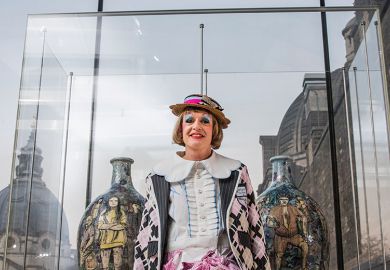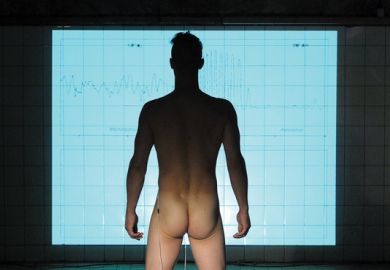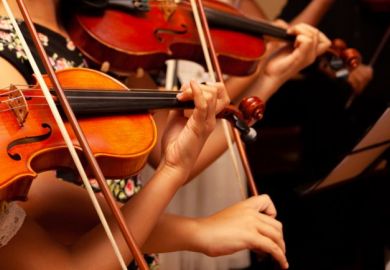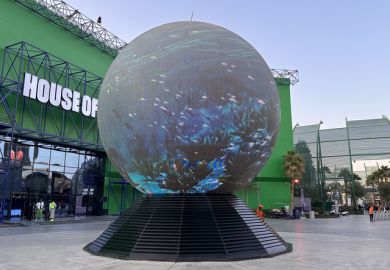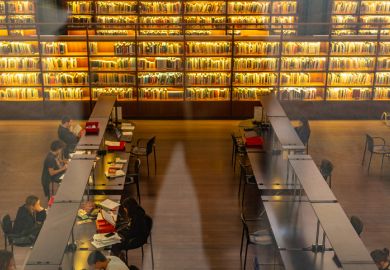Artists often present us with material that is highly disturbing. This is to be welcomed, given that many important issues are also difficult to confront. But how far should art students be allowed to produce offensive work – even if only as a way of confronting their dark side and getting it out of their system?
That was one of the questions I wanted to ask Grayson Perry, the self-proclaimed “transvestite potter” who is now a national treasure in the UK and chancellor of the University of the Arts London. Before he developed his beloved public image as a quirky but trusted boundary pusher, he was clearly once a very angry young man.
In his early days as an art student, he recalled in 2007, he consciously “wanted to offend” and drew on “the rudest images I could think of: women being shagged by wolves, handicapped Fascists, Thalidomide girls, lots of swastikas, S&M hospitals…Apparently some students led a delegation to the head of the college to complain about me.” It is safe to say that such work might cause equal or even greater outrage in an art school today.
Pottery is usually considered rather sedate. But similar questions apply when we look at other, more confrontational genres. For example, last year I interviewed Dominic Johnson, reader in performance and visual culture at Queen Mary University of London, about the archive there devoted to a particularly challenging performance artist called Jon Jon. Many will be disturbed (or bored) by his blood-stained relics and gruesome video performances, which often took place in small venues frequented by “the piercing community”, although I doubt if there was much call for them to be banned.
But would we accept similar performances from students? “It would be a kind of pedagogical hypocrisy,” Dr Johnson told me on another occasion, “to show students work that you then wouldn’t allow them to find safe and reasonable ways of exploring in practice…I get frequent emails from students from all over the country who want to make a show where they insert a needle into their skin or make an incision with a scalpel – something not particularly anomalous within the history of live art – but will be absolutely prevented from doing so by tutors or technical teams.”
When I asked him about some of the consciously offensive material mentioned by Mr Perry, Dr Johnson admitted that there’s now “a different context in which staff and students are expected or required to consider the idea of the teaching space as a ‘safe space’. This is sometimes dismissed as a neutered, degraded or watered-down ‘millennial’ condition, but it also does prevent some people from being victimised or demeaned by poorly thought-out statements or representations by others.”
As examples of art projects that gave rise to understandable concerns, he cited a student at Central Saint Martins, University of the Arts London who in 2014 “announc[ed] he would lose his virginity in front of 100 people as a piece of performance art” – and the even more blatant case of two professors at the University of California, Los Angeles who took retirement after allowing a student to bring a gun into class for a “brief performance [that] involved a simulation of Russian roulette”.
Although Mr Perry told me cheerfully about a Jewish collector who had bought one of his pieces “with a great big swastika on it”, it is clear that some of his early work – now on display again at an exhibition in Bath – is near the limit of what some would consider acceptable expression.
Yet he has undoubtedly gone on to become a much-loved public figure whose television documentaries on Brexit, class and masculinity are notable for their humanity and attempts to heal social divisions. My profile of him explores how he got from there to here, and how far we need to give art students licence to “vent” and even to “offend”.
Matthew Reisz is a reporter and books editor for Times Higher Education.
Register to continue
Why register?
- Registration is free and only takes a moment
- Once registered, you can read 3 articles a month
- Sign up for our newsletter
Subscribe
Or subscribe for unlimited access to:
- Unlimited access to news, views, insights & reviews
- Digital editions
- Digital access to THE’s university and college rankings analysis
Already registered or a current subscriber?

